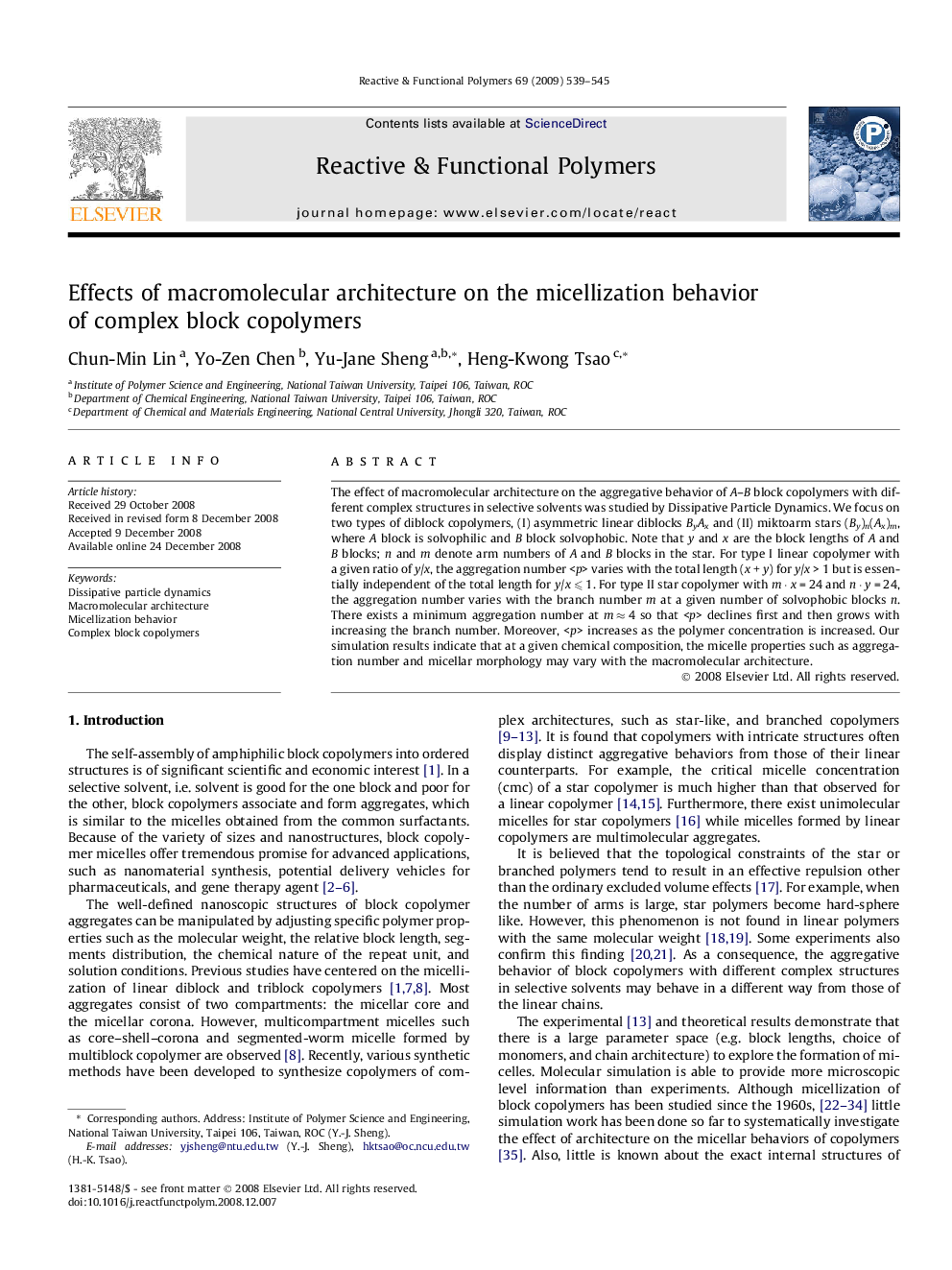| Article ID | Journal | Published Year | Pages | File Type |
|---|---|---|---|---|
| 5210983 | Reactive and Functional Polymers | 2009 | 7 Pages |
Abstract
The effect of macromolecular architecture on the aggregative behavior of A-B block copolymers with different complex structures in selective solvents was studied by Dissipative Particle Dynamics. We focus on two types of diblock copolymers, (I) asymmetric linear diblocks ByAx and (II) miktoarm stars (By)n(Ax)m, where A block is solvophilic and B block solvophobic. Note that y and x are the block lengths of A and B blocks; n and m denote arm numbers of A and B blocks in the star. For type I linear copolymer with a given ratio of y/x, the aggregation number
varies with the total length (x + y) for y/x > 1 but is essentially independent of the total length for y/x ⩽ 1. For type II star copolymer with m · x = 24 and n · y = 24, the aggregation number varies with the branch number m at a given number of solvophobic blocks n. There exists a minimum aggregation number at m â 4 so that
declines first and then grows with increasing the branch number. Moreover,
increases as the polymer concentration is increased. Our simulation results indicate that at a given chemical composition, the micelle properties such as aggregation number and micellar morphology may vary with the macromolecular architecture.
Related Topics
Physical Sciences and Engineering
Chemistry
Organic Chemistry
Authors
Chun-Min Lin, Yo-Zen Chen, Yu-Jane Sheng, Heng-Kwong Tsao,
